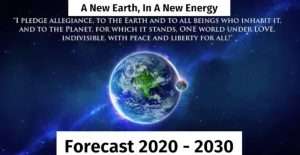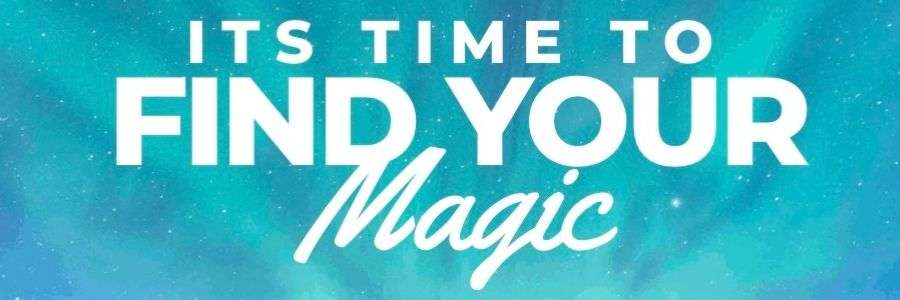How did the Federal Reserve start?

The basic plan for the Federal Reserve System was drafted at a secret meeting held in November of 1910 at the private resort of J.P. Morgan on Jekyll Island off the coast of Georgia. Those who attended represented the great financial institutions of Wall Street and, indirectly, Europe as well. The reason for secrecy was simple. Had it been known that rival factions of the banking community had joined together, the public would have been alerted to the possibility that the bankers were plotting an agreement in restraint of trade—which, of course, is exactly what they were doing. What emerged was a cartel agreement with five objectives: stop the growing competition from the nation’s newer banks; obtain a franchise to create money out of nothing for the purpose of lending; get control of the reserves of all banks so that the more reckless ones would not be exposed to currency drains and bank runs; get the taxpayer to pick up the cartel’s inevitable losses; and convince Congress that the purpose was to protect the public. It was realized that the bankers would have to become partners with the politicians and that the structure of the cartel would have to be a central bank. The record shows that the Fed has failed to achieve its stated objectives. That is because those were never its true goals. As a banking cartel, and in terms of the five objectives stated above, it has been an unqualified success.
– G. Edward Griffin, “The Creature from Jekyll Island”

The Federal Reserve has set the template for how almost all other banks in the world operate today.
Let’s focus on this one goal of the Fed (and, by extension, most banks in the world), for it is the most disturbing of all:
“obtain a franchise to create money out of nothing for the purpose of lending”
These are some of the grave ills that this one single goal creates in society:
Banks issue currency (bank credit) on the basis of promissory notes signed by their customers (borrowers). These notes may be secured or unsecured. A secured loan has specific assets named as collateral, such as a car or a house. An unsecured note has no specific collateral assets pledged to assure repayment of the loan. In the former case, if the borrower fails to make the payments as specified in the loan agreement, the bank can seize the collateral. Thus, cars are sometimes “repossessed,” and houses are “foreclosed.” So the bank, in actuality, monetizes your promise to repay. Or, to put it another way, the bank monetizes the value of your assets in the case of a secured loan, or the value of your labor and skills if your note is unsecured.
– Thomas Greco, “Money”
A recent German study on the transfer of wealth via interest from one economic group to another was conducted by Helmut Creutz, a monetary analyst and author. In his 2007 survey of German families, he grouped the entire sample into 10 income categories of approximately 3.5 million households each.
Because of the upward concentration of wealth caused by interest, there was a transfer of wealth from the bottom 80 percent of the population to the top 20 percent, especially the top 10 percent, due exclusively to the interest feature of the monetary system used. This transfer of wealth occurred independently of the cleverness or industriousness of the participants, attributes often assumed to account for differences in income.
– Bernard Lietaer, Jacqui Dunne, “Rethinking Money”
By the way, we will see Bernard Lietaer’s name often in this book.
Known as the “Architect of the Euro”, Dr. Lietaer designed the ECU, the mechanism which enabled the currencies of twelve countries in the Euro Zone to converge, while he was at the central bank of Belgium.
In short, he knows his stuff.
The politicization of money, banking, and finance has enabled the concentration of power and wealth in few hands—a situation that has been extremely damaging to societies, cultures, economies, democratic government, and the environment. The privileged private banking establishment has managed to monopolize everyone’s credit, enabling the few to exploit the many through their partiality in allocating credit, by charging usury and increasingly exorbitant fees, and by rewarding politicians for their service in promoting their interests These two, government and banking, have colluded to create a political money system that embodies a “debt imperative” that results in a “growth imperative,” which forces environmental destruction and rends the social fabric while increasing the concentration of power and wealth.
– Thomas Greco, “The End of Money and the Future of Civilization”
The recurrent disorder in the financial markets and the cascading failures of financial institutions should come as no surprise. It is not possible for humans to live sustainably on this earth under the present monetary regime. Why? The simple answer is, because money is credit created on the basis of loans made by banks at interest. Those who recognize the impossibility of perpetual exponential growth and who understand how compound interest is built into the global system of money and banking expect that there will be periodic “bubbles” and “busts,” each of increasing amplitude until the system shakes itself apart.
Engineers call this phenomenon “positive feedback.” Such a system cannot find equilibrium but eventually “explodes.” Imagine a heating system in which the thermostat, sensing a rise in temperature, calls for more heat instead of less. Such is the nature of the debt-money system. The imposition of interest on the debt by which money is created causes debt to grow exponentially with the passage of time. It therefore demands that more debt be created to enable the payment of the interest due. Such is the debt imperative that gives rise to a growth imperative. Among other things, it prevents the emergence of a steady state economy because no amount of production and increase in business activity can satisfy the lenders’ demands for repayment.
Is the final round at hand, or can the system be saved yet one more time?
Today’s centralized global money system (controlled as it is by a small elite class) is from the standpoint of equity, harmony, and sustainability, fundamentally flawed—and in my view, is a root cause of the mega-crisis confronting civilization. When that flawed money system is transcended, resolution of the other aspects of the mega-crisis will then become possible.
– Thomas Greco, “The End of Money and the Future of Civilization”
With the blockchain and DeFi, people worldwide can finally build a better system, whether the old system likes it or not.
This wasn’t possible in the past.
Today it is.
As opposed to fiat currencies, no single centralized entity like governments and central banks can influence the price or the accessibility of protocol tokens. Control is therefore distributed, much like with commodities, where no single government or other entity controls the mining of gold, silver, oil, etc. Who has how much control in the system is subject to the token creation rules defined in the protocol. The token creation and supply policy (monetary policy of the network) is the point of centralization that can only be changed by majority consensus of all network actors in the form of a software upgrade. The protocol therefore has functions of a central bank. Potential “central bank smart contracts” could account for more adaptive monetary policy than the one Bitcoin network provides. Such trends to make the monetary policy of a token more adaptive and stable are emerging.
– Shermin Voshmgir, “Token Economy”
Besides being extremely unfair and damaging too much of the world, the old ways are… how can I put this… very old indeed! They have passed their use-by date!
The money that is in use today was actually designed in the 17th and 18th centuries, a mostly preindustrial epoch untroubled by pollution, greenhouse effects, and overpopulation. The vast majority of the world’s estimated 700 million people back then were farmers living in rural settings, who rarely ventured far from their homes or villages, and whose economic activity consisted mostly of local barter exchanges. Money was in limited use, especially in rural England, the country in which much of the world’s current monetary paradigm originated.
The emergence of our [current] monetary paradigm occurred at a time when the medical treatment of choice for the prevention and treatment of illness and disease was bloodletting—the removal of often-copious amounts of blood from patients. Though actually harmful to patients in the majority of cases, bloodletting remained the most common medical practice from antiquity up until the late 19th century. When, for example, George Washington came down with a throat infection, nearly four pounds of his blood were removed. It was far more likely the treatment and not the illness that contributed most to his demise.
The practice of bloodletting and the many notions that justified it, as well as the explanations that were offered time and again for a patient’s inevitable decline, went unchallenged by one generation after another for the better part of 2000 years. Notwithstanding the brilliance of the theories in support of this practice and the physicians that espoused them, both theory and practitioner were mistaken. But in the absence of bacteriology, immunology, and other common understandings available to us today, this flawed medical procedure had the appearance of certitude and managed to endure for millennia.
Our megatrends persist not because they are intractable but, once again, because we are using a very limited set of monetary tools that were put in place by another age.
– Bernard Lietaer & Stephen Belgin , “New Money for a New World”
Today, we have over 7 billion people (vs the 700 million then), and the planet is in grave ecological peril if we don’t act RIGHT NOW!
Besides, the banking and monetary systems are in a state of great instability, overladen with debt and inflation, with systemic collapse imminent.
The current monetary system is old, o-l-d, as in medieval old, “before electricity, steam engine, and petroleum” old.
It is even older than our outdated education system.
It is time for alternatives.
And really, we don’t have a choice.
Because the fate of our home planet requires us to consider non-monetary activities. Otherwise, we won’t be able to save it and ourselves.
The consequences of not taking into account nonmonetary activities are unfortunate and significant. Many such exchanges are critically vital to the social fabric of society and comprise a significant portion of overall economic activity in communities and nations. Yet, they remain invisible to conventional economics because no money changes hands.
The decline of a nonmarket economy, such as the social breakdown of a family or community, is a negative prospect for society. Yet, from a strictly monetized economic perspective, it is not measured and therefore has no value. If, however, the breakdown gets to the point where paid intervention is needed, the costs of social decay are then registered as profit.
As economists Clifford Cobb, Ted Halstead, and Jonathan Rowe have pointed out, “The GDP not only masks the breakdown of the social structure and the natural habitat upon which the economy—and life itself—ultimately depend; worse, it actually portrays such breakdown as economic gain.”
Costs associated with psychological counseling, social work, and addiction treatment, which arise from the neglect of the nonmarket realm, are tallied as economic gains. Crime adds billions to the GDP due to the need for prison buildings, increased police protection, and repair of property damage. Similarly, the depletion of our natural resources, the clean up and medical treatments associated with industry’s toxic byproducts, the costs of ecological disasters such as the Exxon Valdez and recent British Petroleum oil spills, the terrorist attacks of 9/11, relief efforts following Hurricane Katrina, the devastation caused by wars, and the hundreds of billions of dollars allocated in emergency stimulus packages—all register as improvements to a nation’s economy by the curious standards of the GDP.
The following critique of the GNP was given by Robert F. Kennedy at a rally for Friends of the Earth in New York in 1963. It was reechoed in large part by the Senator in one of his last speeches in March 1968:
“The Gross National Product includes air pollution and advertising for cigarettes, and ambulances to clear our highways of carnage. It counts special locks for our doors, and jails for the people who break them. GNP includes the destruction of the redwoods and the death of Lake Superior. It grows with the production of napalm and nuclear warheads…and if GNP includes all this, there is much it does not comprehend. It does not allow for the health of our families, the quality of their education, or the joy of their play. It is indifferent to the decency of our factories and the safety of our streets alike. It does not include the beauty of our poetry or the strength of our marriages, or the intelligence of our public debate or the integrity of our public officials…GNP measures neither our wit nor our courage, neither our wisdom nor our learning, neither our compassion nor our devotion to our country. It measures everything, in short, except that which makes life worthwhile.”
Indonesia, for example, has been a huge success story since the 1970s according to GDP standards. But it achieved this status by clear-cutting its forests, exhausting its soil, and selling off precious nonrenewable mineral wealth. In short, it sold off its future to pay for accounting measures of success.
– Bernard Lietaer & Stephen Belgin , “New Money for a New World”
National currencies are now technically defined as “fiat” money. Fiat takes its origin in the very first word that God spoke in the Latin version of Genesis: Fiat lux (“let light be”). It implies the godlike ability to create something out of nothing (“ex nihilo”) through the power of the word or, in practice, in this case, the stroke of a pen. This means that money isn’t something that comes out of a farm, a mine, a mint, or even a printing press. It comes into being by the power of the word or, in these times, a stroke of a computer key.
So what makes one form of money more desirable than another? As economics professor L. Randall Wray writes, “In all modern economies the government defines money by choosing what it will accept in the payment of taxes. Once it has required that the citizens must pay taxes in the form of particular money (for example dollars), the citizens must obtain that money to pay taxes. In order to obtain that which is necessary to pay taxes, or money, they offer labor services or produced goods to the government (as well as to markets). This means the government could buy anything that is for sale for dollars merely by issuing dollars.” Therefore, a sovereign government does not really “need” to raise taxes to pay for its expenses. Once this is understood, it becomes clear that neither taxes nor government bonds “finance” government spending. Instead, taxes are required to give value to money.
In reality, in the money domain, everything starts and ends with government. At the commencement of the process, the government decides what it will accept in payment of taxes. Historically, it has chosen specific commodities, such as wheat or other food products, bronze or copper ingots, beaver pelts, tobacco leaves, or gold or silver bullion. This obligation puts the population to work to find or produce those commodities. Today, with fiat currencies required for the payment of taxes, the population works, trades, and invests in national currencies so they can meet their responsibilities.
It’s the same story worldwide. This is true regardless of the country of issuance, the political philosophy (capitalist, communist, socialist, fascist, totalitarian, despotic, or democratic), and the different designations, and despite differences in material composition, shape, or particular motif. The currencies are, each and every one of them, the same type of money that is required by the state for the payment of taxes.
By type, what is meant is that all national currencies have the same design features. The design does not mean how the money actually looks—pictures of heads of state looking presidential or regal—but how it is created. This in turn informs how it operates. Like a car, money has an engine that drives certain behaviors, and how that engine is built will influence its performance.
Not only are all conventional national currencies fiat based but also they are hierarchical in that the monopoly of currency creation has been given to the banking system under the supervision of a central bank. Furthermore, conventional currency needs to be kept scarcer than its usefulness to maintain its value, and consequently, there is competition to procure it. The implications of the functional dynamics of national money have some profound repercussions for society at large.
– Bernard Lietaer, Jacqui Dunne, “Rethinking Money”
…
If you liked this excerpt, get the full book here:










